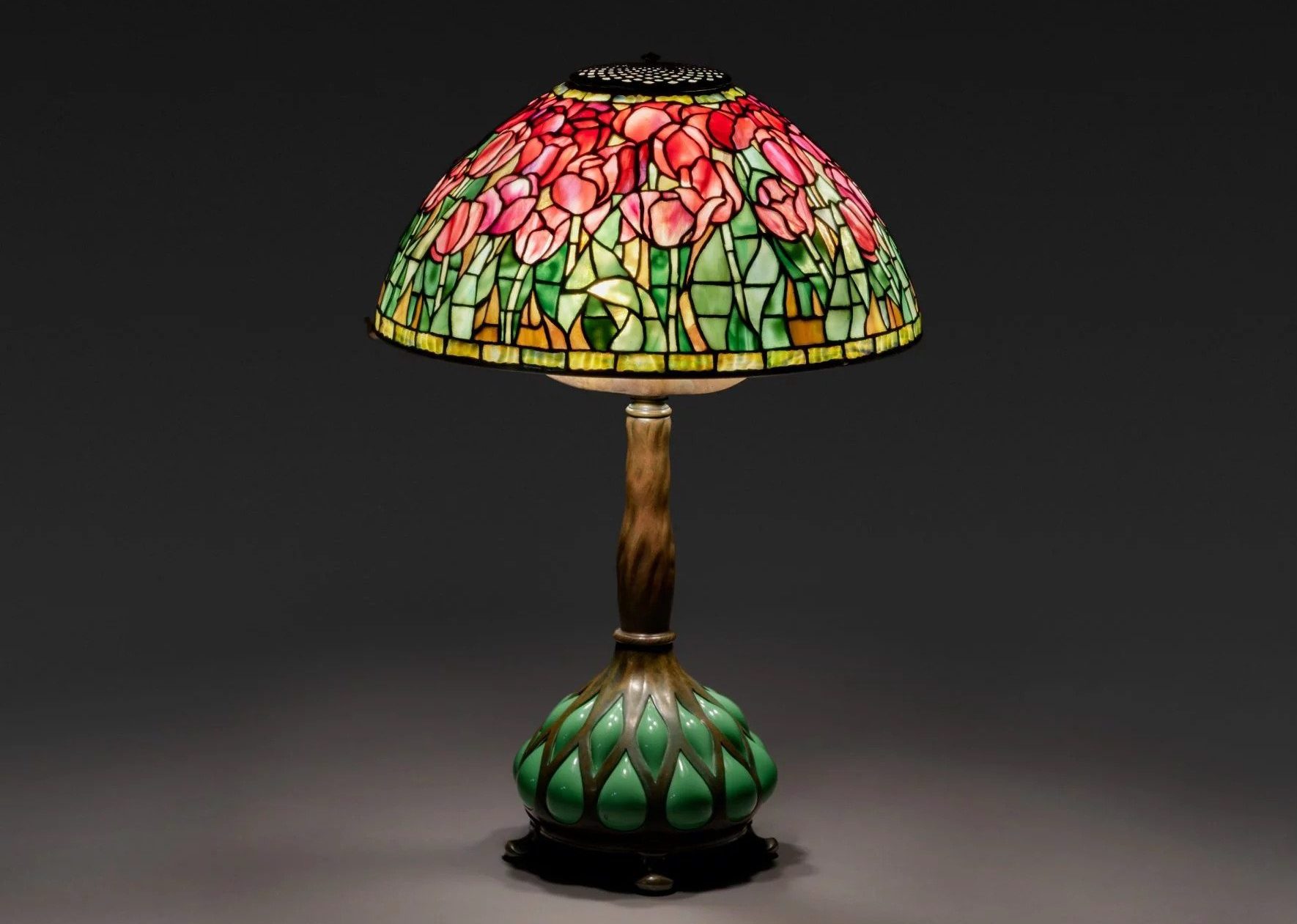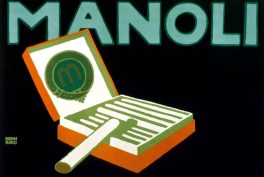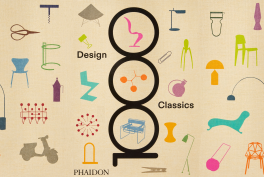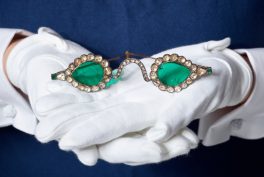Summary
- Tiffany Glass is widely admired and particularly popular in lamps and light fixtures.
- Louis C. Tiffany has been credited as the designer, but the works were a collaboration of several artisans from the studio.
- The nature-based designs were particularly popular with buyers.
- The decline of interest in Tiffany Glass.
Louis Comfort Tiffany
Tiffany Glass were the products of the Tiffany Studios, established in Queens, New York by Louis Comfort Tiffany. He was the son of the wealthy jeweler, Charles Lewis Tiffany, who founded the esteemed jewelry company Tiffany & Co. The younger Tiffany undoubtedly shared his father’s talent for creating beautiful objects.
Louis C. Tiffany was a landscape painter who received his initial artistic training with George Inness in Eaglewood, New Jersey. Thereafter he attended the National Academy of Design in New York City in 1866, and spent the following year under the tutelage of salon painter Leon-Adolphe-Auguste Belly in Paris, France.
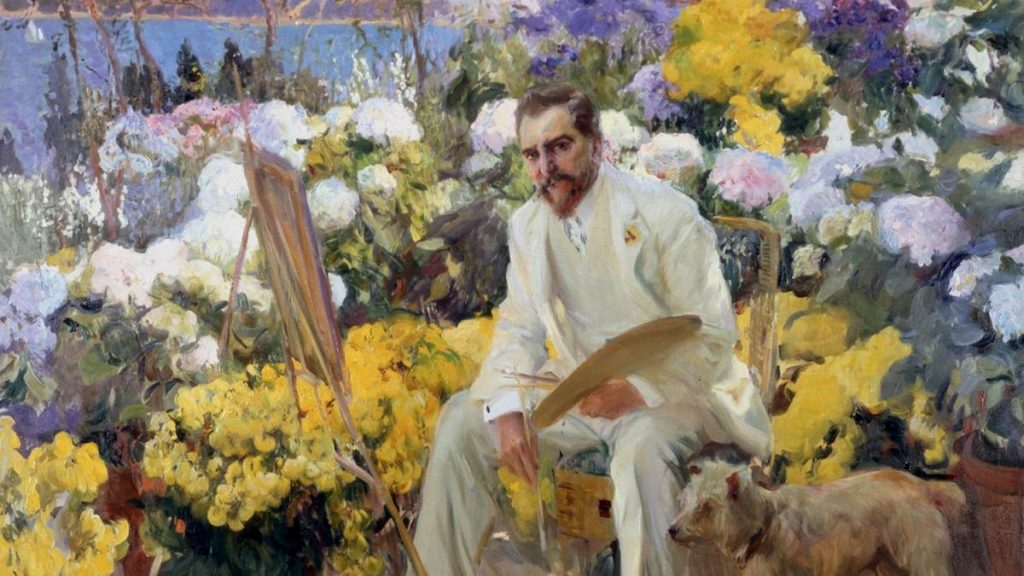
Joaquín Sorolla, Portrait of Louis Comfort Tiffany, ca. 1911, Hispanic Society of America, New York, NY, USA. Wikimedia Commons (public domain).
He returned to New York in 1869 and attended the NAD Antique School, where he became acquainted with the works of Samuel Colman. During the following decades, Tiffany made frequent trips to Europe and North Africa. It is believed that he found tremendous influence in medieval and Roman glass works that he encountered on his travels.

Tiffany Glass & Decorating Company, Daffodil Table Lamp. ca. 1910. Sotheby’s.
Louis C. Tiffany had a long and remarkable career that spanned over five decades. He first established a decorating firm: Louis C. Tiffany and Associated Artists. Albeit short-lived, this was his first foray into the creation of stained glass ensembles. The incredible and rather unique vision, as well as the connections from his affluent family, resulted in significant commissions for churches, residences, and public buildings-including one for the White House under President Chester Arthur!
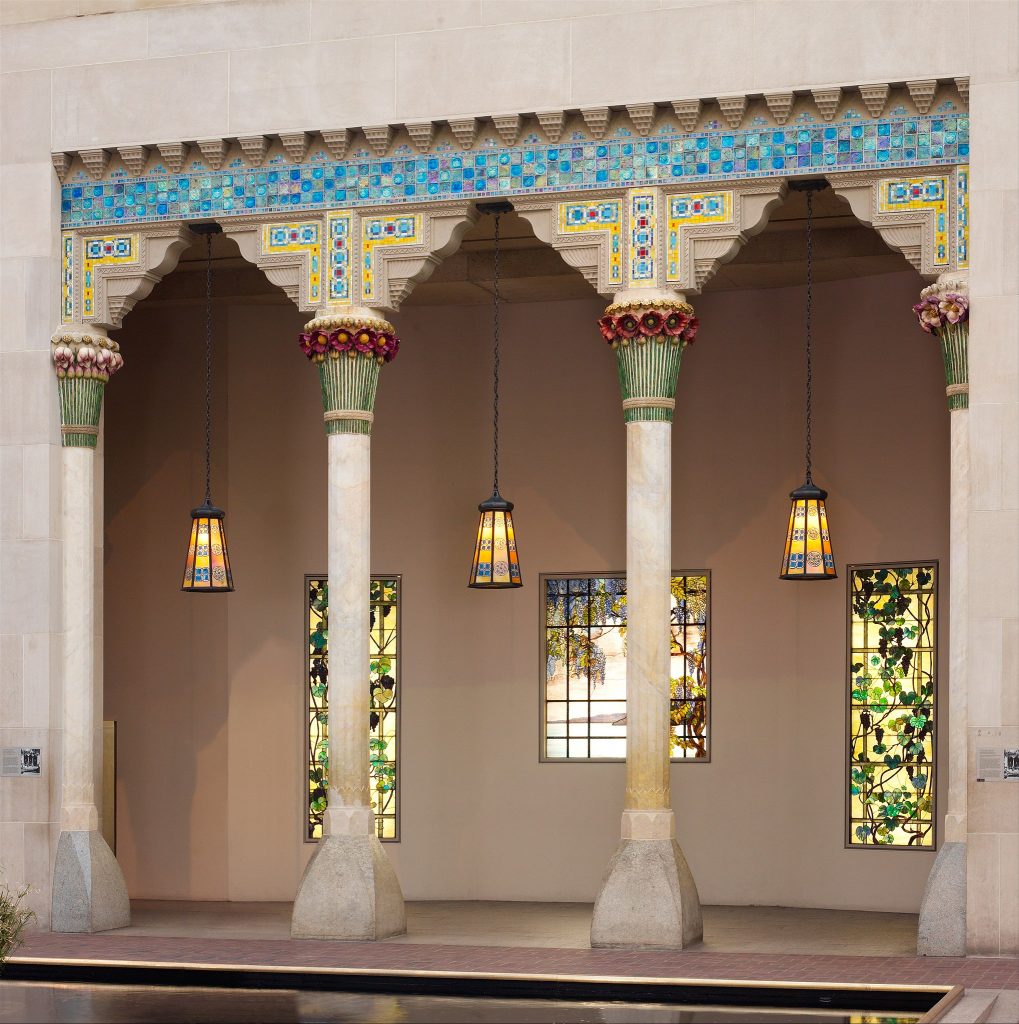
Louis Comfort Tiffany, Architectural Elements from Laurelton Hall, Oyster Bay, New York. ca. 1905, The Metropolitan Museum of Art, New York, NY, USA. Wikimedia Commons (public domain).
The Construction of Tiffany Lamps
Tiffany Glass is prepared by a process known as the copper foil method. This involves first drafting a decorative pattern on a cardboard mockup. A number and glass color is written on the different sections of the pattern, then sheets of glass are laid over it and traced. The glass is then cut and ground into the desired shapes.
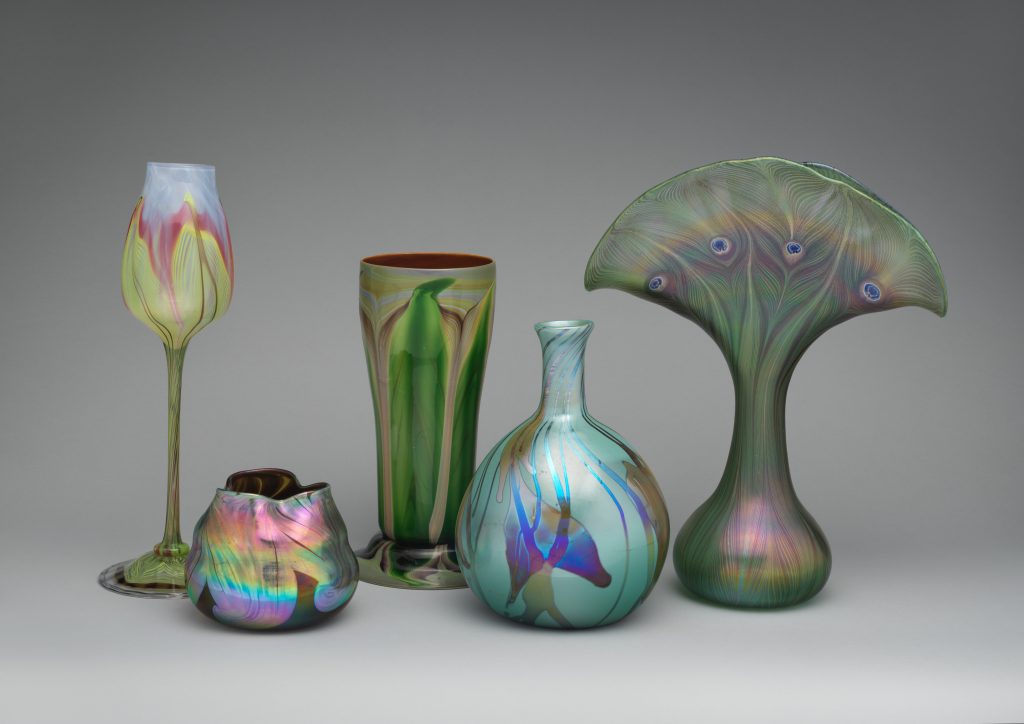
Louis Comfort Tiffany, Vases. ca. 1893 to 1896, The Metropolitan Museum of Art, New York, NY, USA.
Next, copper foil solution is applied to the edges of the individual pieces that are firmly adhered together. Once the pieces of glass are fully bonded, the edges are soldered together. The bonding is so strong that the glass does not vibrate when tapped; striking a Tiffany Glass work produces a dull and muffled sound.
Most Tiffany glass lamps include a hollow bronze base with a ring of lead that is intended to support the heavy glass top. The bronze was processed from Tiffany’s foundry in Queens, New York.
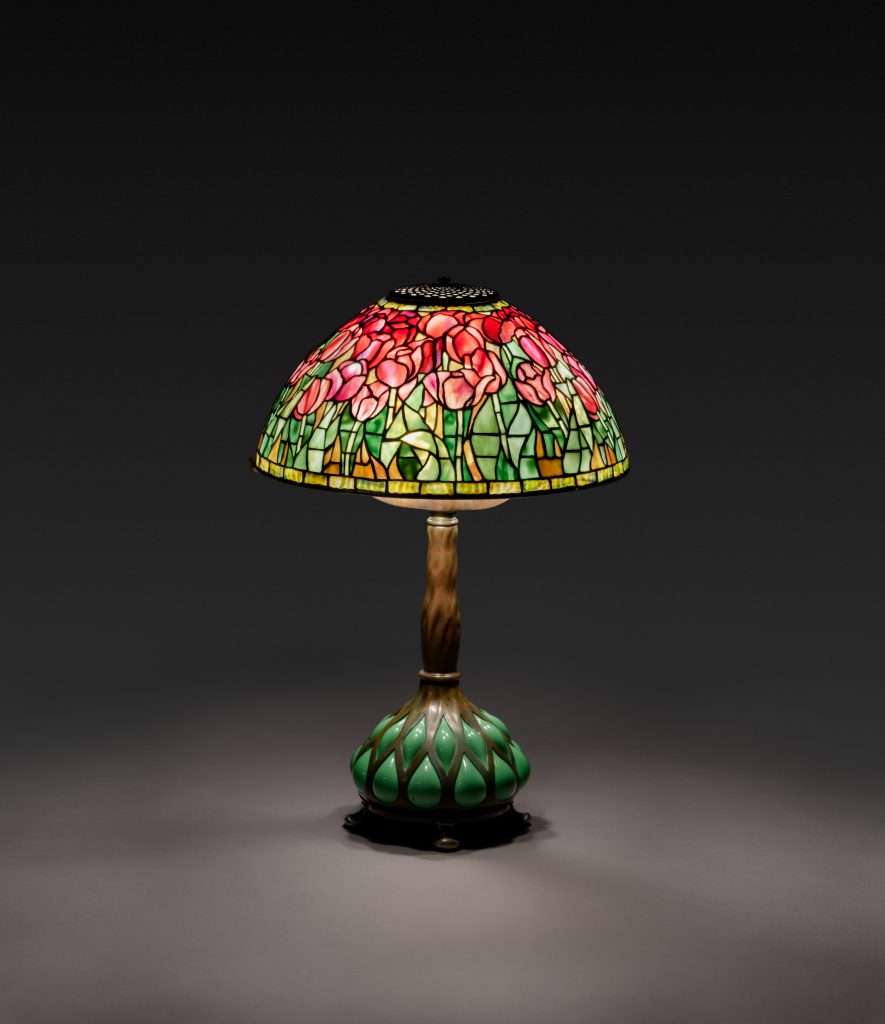
Tiffany Glass & Decorating Company, Tulip Table Lamp, ca. 1900 to 1906, Cleveland Museum of Art, Cleveland, OH, USA.
The Making of Tiffany Glass
The early works produced by Louis C. Tiffany were composed of glass from cheap bottle jars, deliberately sought as these glasses contained impurities that could be manipulated to create various colors and patterns. Realizing the potential of such glass in his works, Tiffany made an unsuccessful attempt in convincing glassmakers to leave the impurities in there, which eventually lead to Tiffany establishing his own glassmaking enterprise.

Louis Comfort Tiffany, Autumn Landscape. ca. 1923 to 1924, The Metropolitan Museum of Art, New York, NY, USA.
Louis C. Tiffany has been credited with the creation of the Favrile glass: a type of blown art glass known for its distinctive iridescence. Unlike most iridescent glasses, the color is ingrained within the Favrile glass itself. The Favrile process was patented by Louis C. Tiffany in 1894, and the glass was incorporated into windows, lamps, and many other items of décor. Although Tiffany’s works were produced with the Favrile stamp and Tiffany’s name or initials to prevent imitations, over time these glassworks and the Favrile stamp itself became widely duplicated.
The largest work featuring Favrile glass is Dream Garden, designed by artist Maxfield Parrish, and commissioned around 1916 by the Curtis Publishing Company for their headquarters in Philadelphia. At its peak, the Tiffany factory provided employment to over 300 artisans.
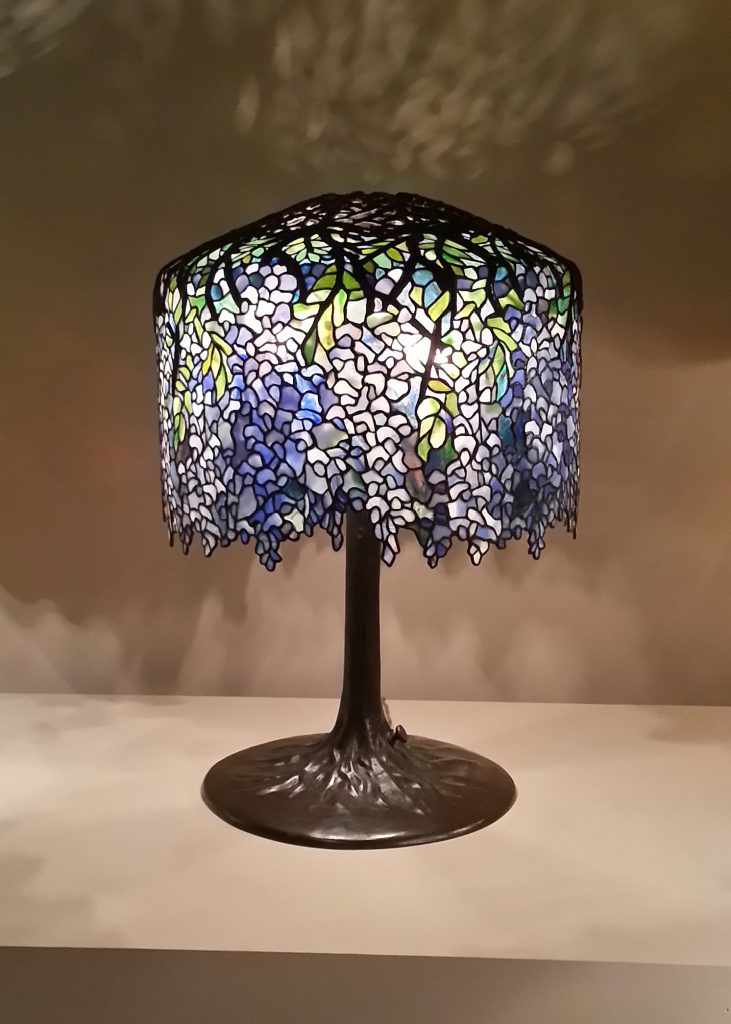
Tiffany Studios, Wisteria Table Lamp, ca. 1902, Virginia Museum of Fine Arts, Richmond, VA, USA. Photograph by Fopseh via Wikimedia Commons (CC-BY-SA-4.0).
Inspired by Nature
Louis C. Tiffany was enamored by the Art Nouveau movement in Europe, characterized by the use of light and color to form free-flowing designs based on natural themes. The style challenged the ornate Victorian style of that time and played on Tiffany’s strengths as a landscape painter.
Tiffany was reportedly enthralled by the lush natural landscape and immense floral display of his Long Island estate, Laurelton Hall. It is believed that fresh cuttings were shipped weekly to the Tiffany Studios to provide inspiration to the designers.
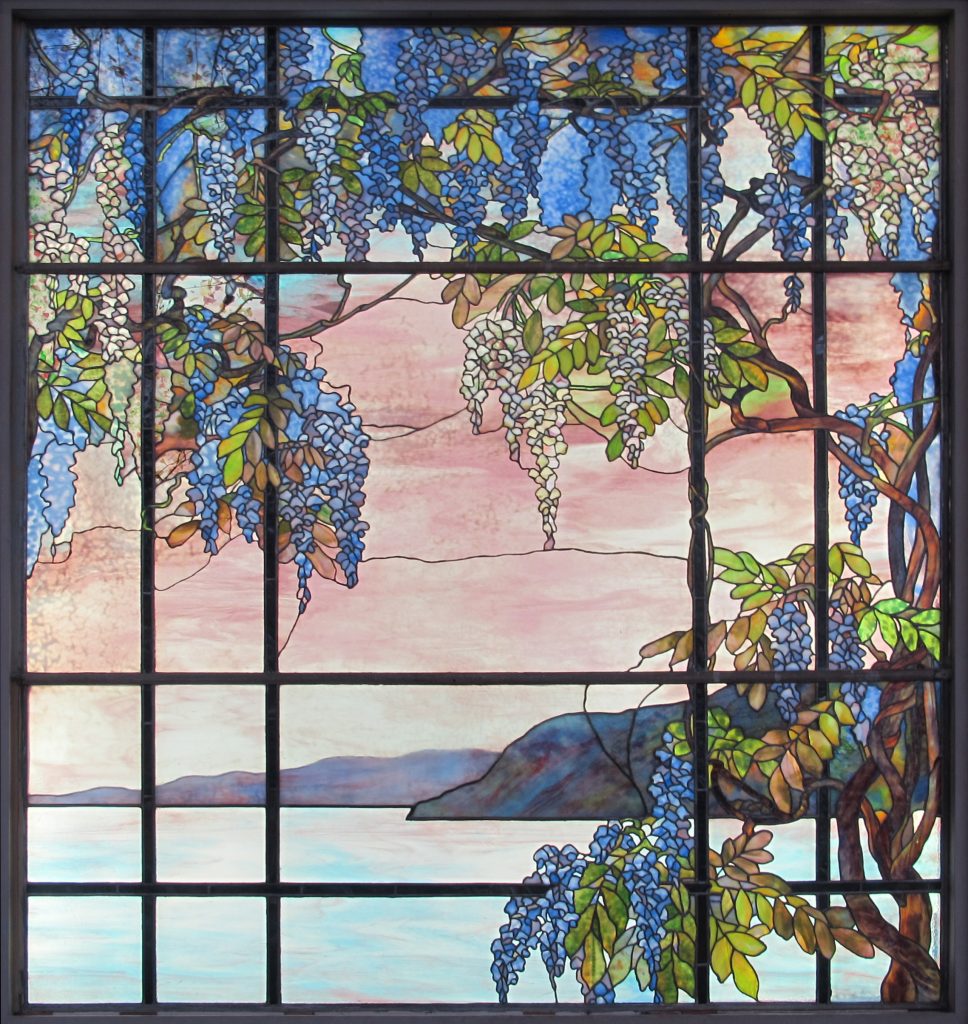
Louis Comfort Tiffany, Glass Window from the Tiffany Residence at Laurelton Hall, Oyster Bay, New York, The Metropolitan Museum of Art, New York, NY, USA. Photograph by Sailko via Wikimedia Commons (CC-BY-SA-3.0).
The Designers of Tiffany
Company literature and public perception for over 100 years have recognized Louis C. Tiffany as the designer of the famous lamps. However, around 2007, Professor Martin Eidelberg, professor emeritus of art history at Rutgers University, discovered a series of letters known as the “Driscoll letters.” These have provided a fascinating glimpse behind the curtains of the Tiffany Studios and have revealed that Ohio native, Clara Wolcott Driscoll, likely played a vital role in designing many of the iconic floral patterns on the famous Tiffany lamps as well as their other creations.
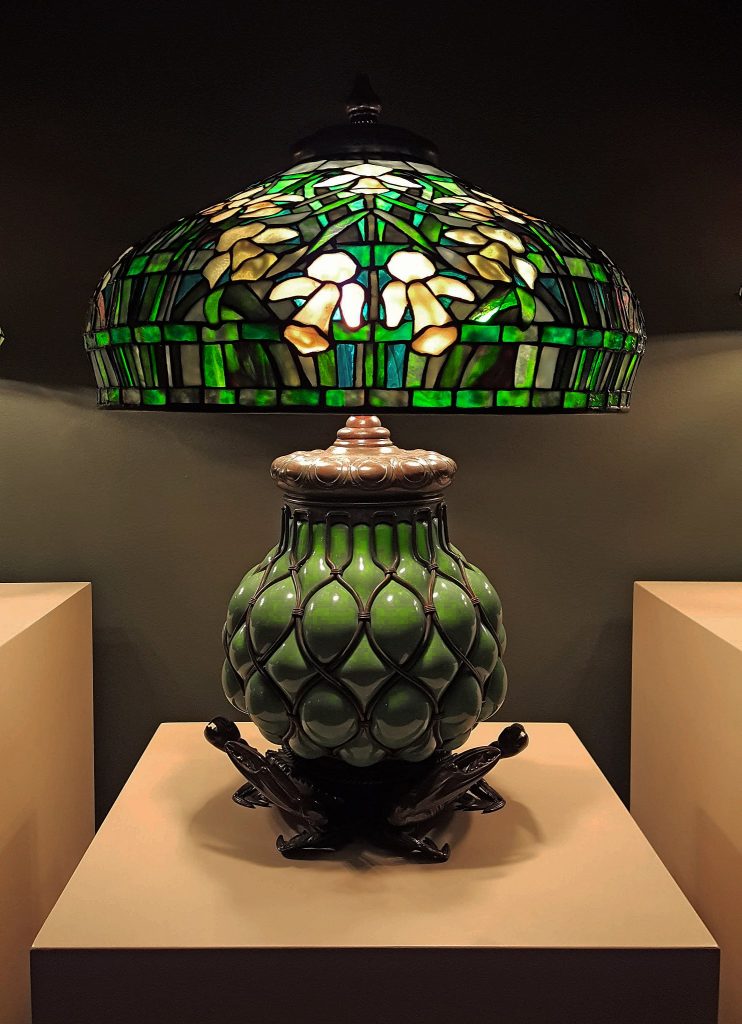
Tiffany Studios, Daffodil Table Lamp, Cleveland Museum of Art, Cleveland, OH, USA. Photograph by Tim Evanson via Flickr/Wikimedia Commons (CC-BY-SA-2.0).
Glasswork Themes
Tiffany Glass came in a broad variety of patterns and themes that were, and still remain, widely appreciated, in part due to their remarkable ability to blend into many styles of home décor. Glassworks generally featured intense colors in a variety of textures and patterns that continue to captivate buyers.
Lamp designs featuring natural and botanical themes, such as colorful blooms, dragonflies, butterflies, feathers, etc., were most sought after and generally commanded the highest prices. Many floral lamps were produced with irregular upper or lower borders or crown edges to simulate branches or shrubbery. Tiffany Studios also produced lamps with flowered cone and globe shapes as well as geometric shapes that formed captivating patterns. The lamp designs were often carried into the patterns on the base.
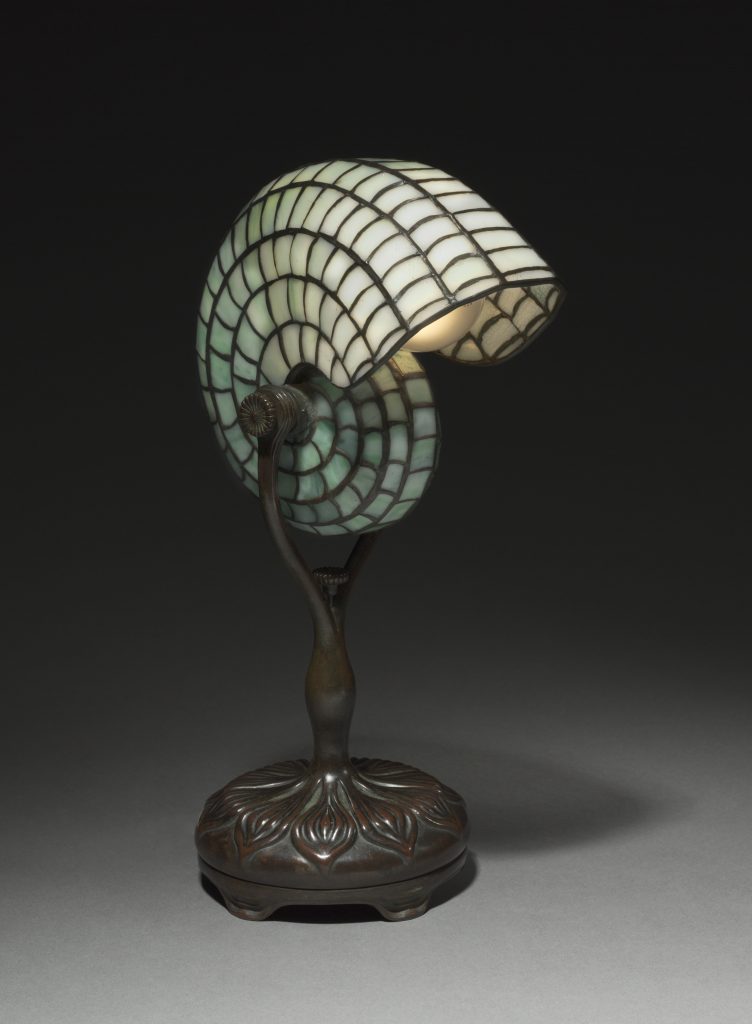
Tiffany Glass & Decorating Company, Nautilus Reading Lamp, ca. 1899 to 1902, Cleveland Museum of Art, Cleveland, OH, USA.
Tiffany Studios
In 1893, Louis C. Tiffany displayed his lamps in a Byzantine-like chapel at the World Columbian Exposition in Chicago, Illinois. This was widely well-received and led to significant purchases by Julius Lessing, a director of state museums in Berlin, Germany for display at the Museum of Decorative Arts, resulting in Tiffany’s debut in Europe.
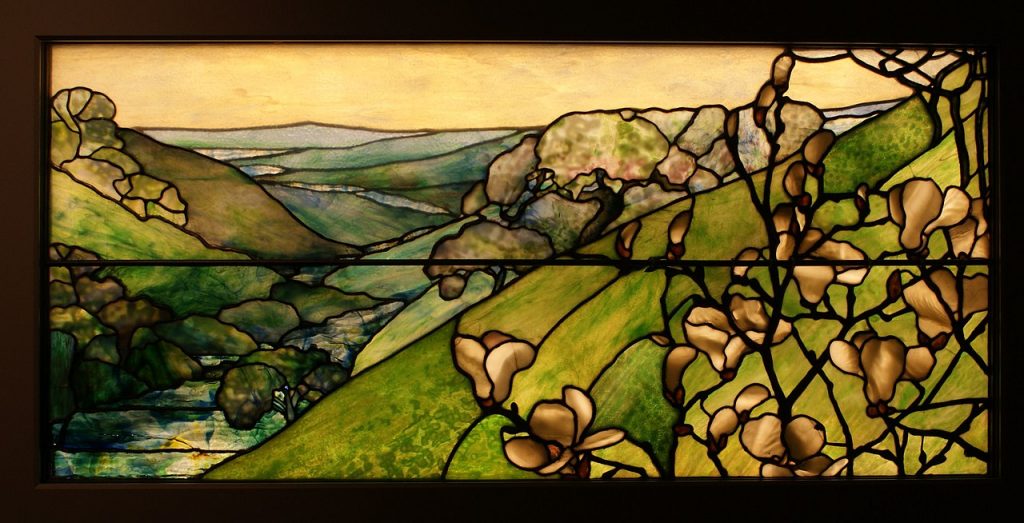
Tiffany Studios, Landscape Window, ca. 1910-1920, New York Historical Society, New York, NY, USA. Photograph of Griannan via Flickr/Wikimedia Commons (CC-BY-2.5).
Tiffany’s commercial success in other European countries was limited until he established a contractual agreement with German-French art dealer Siegfried Bing around 1894. Bing agreed to serve as Tiffany’s sole European representative, and his writings about Tiffany’s products reveal his great sincere admiration for them. In the six years that followed, Bing cultivated a tremendous interest in Favrile glass and lamps in Europe, and he had a subtle influence on the course of Tiffany’s works. The business relationship came to a very gradual end around the 1900s without any specific rupture and, although Tiffany continued to exhibit and sell in Europe, the interest in Tiffany products began to slowly decline.
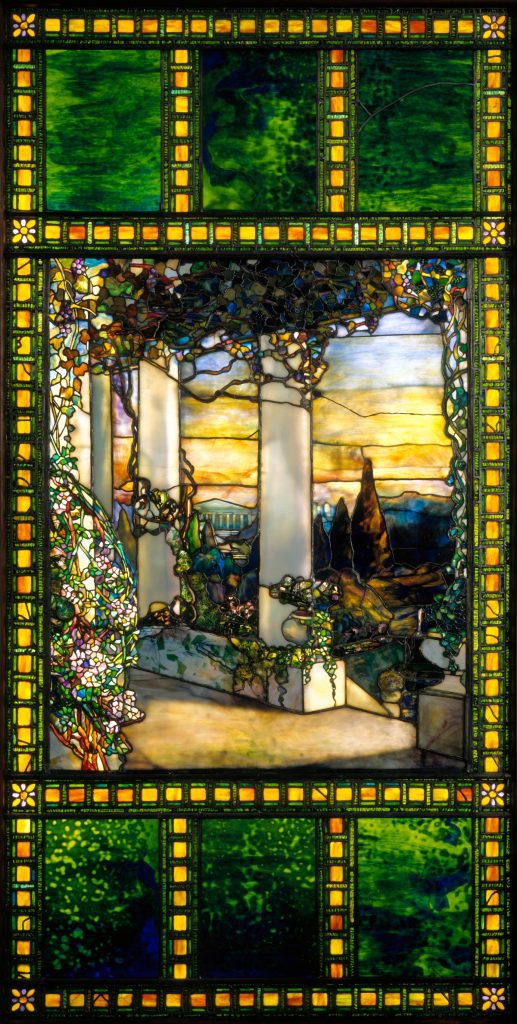
Tiffany Glass & Decorating Company, Hinds House Window, ca. 1900, Cleveland Museum of Art, Cleveland, OH, USA.
End of the Studios
Tiffany Studios closed its doors in 1930 and Louis C. Tiffany died only three years later. There was an abatement in public interest in Tiffany’s glassworks by the time of Tiffany’s death that coincided with the rise of the Art Moderne, or Streamline Moderne, movement. However, around 1958 there were several shows to celebrate Tiffany and the Art Nouveau movement that resulted in some resurgence of public interest.
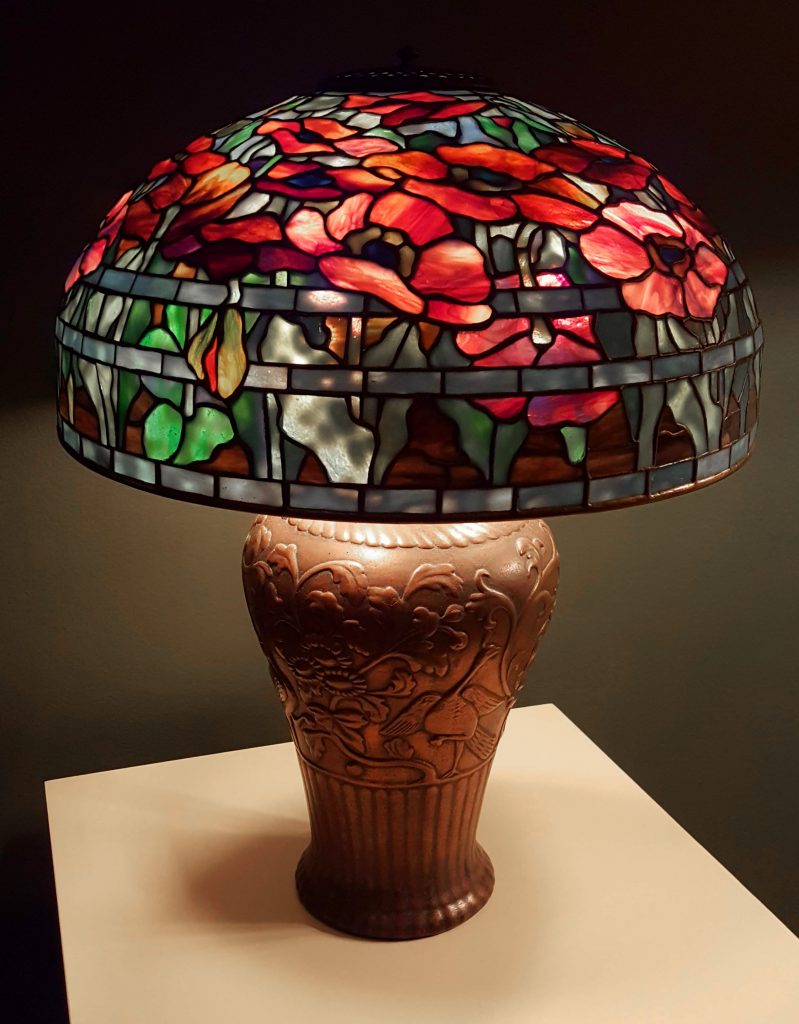
Tiffany Studios, Oriental Poppy Table Lamp, Cleveland Museum of Art, Cleveland, OH, USA. Photograph by Tim Evanson via Flickr/Wikimedia Commons (CC-BY-SA-2.0).
A Reminder of the Art Nouveau Movement
Tiffany Glass is not only a relic of American history, but also a fine example of the Art Nouveau moment in the United States. Tiffany lamps have been widely imitated and the term has now become synonymous with all stained glass lamps. It certainly doesn’t take an art historian or an academic to appreciate the delicate yet sophisticated beauty of Tiffany Glass. Original Tiffany lamps from around 1890 to around 1930 now command a value of anywhere between $4,000 to over $1 million. Christie’s in New York reported the sale of the Pond Lily lamp in December 2018 for a whopping $3,372,500.
